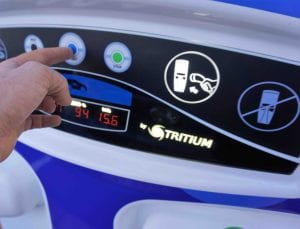Australia’s inevitable shift to electric, shared and autonomous vehicles could be a major boon to Australia’s national electricity market, boosting demand and helping to keep the system reliable and secure.
Or, it could also be a car crash, the Australian Energy Market Commission has warned, if changes to retailer business models and retail market regulations are not made in good time.
In a new issues paper released on Thursday as part of the AEMC’s 2020 retail energy competition review, the Commission calls on industry stakeholders to consider what products and services are being developed to cater to both residential and public charging.
It also wants to know whether retail market competition is facilitating innovation in the electric vehicle space, and whether any existing retail regulation is creating barriers to electric vehicle use and uptake in Australia.
The paper notes that the uptake of electric vehicles in Australian, having started relatively slowly, is forecast to rise to almost saturation coverage in a few decades (figure 1.2), while also changing the underlying residential demand profile as more and more drivers recharge their cars at home (see Figure 1.3).
The impact of of public charging stations, alone – which grew by 140 per cent in Australia in the year to July 2019 – is expected to be particularly significant, with the report comparing the installation of an eight-bay charging station in Adelaide in 2017 to the connection of 100 new homes.
“Sales of electric vehicles increased by more than 200 per cent between 2018 and 2019 and we need to lock in lower cost ways to support consumers who want them,” said acting AEMC chief Suzanne Falvi in comments on Thursday.
“If we get ahead of the curve, we can make sure this technology makes a positive contribution to our future power system and doesn’t become another cost driver.
“We’re starting a conversation today with this issues paper to generate ideas and identify what barriers to innovation there might be that could stop new electric vehicle products and services reaching consumers.”
As well as boosting electricity demand on the NEM, the paper notes that electric vehicles could also benefit the market by promoting more efficient use of existing infrastructure and better managing an increasingly distrubted grid.
“EV charging load could provide a significant aggregated demand response resource for the system,” the paper says, while at a household level EV batteries could be used to soak up excess rooftop solar generation.
“It is expected that the system benefits of flexible charging may be achievable automatically in the future, without requiring conscious consumer action, due to digitalisation,” the report says.
“Vehicle to grid and home technologies may significantly increase the abilities of consumers to interact with the electricity market and this capability is being included in some new EV models.”
This, says the report, poses a significant opportunity for retailers to innovate their service offerings to attract EV consumers – and to ensure that market regulation provides easy access to EV battery values streams for the asset owners.
“Electric vehicles have potential to put energy power back in the hands of consumers and help keep the system reliable and secure,” Falvi said.
“With the right systems in place, households can charge their vehicles when energy is cheap and have the option to sell power back into the grid when it’s more expensive.
“Along with solar PV and smart appliances, electric vehicles can be part of a consumer’s future toolkit to reduce their energy output when prices are high,” she said.
Submissions to the issues paper close on March 19, 2020.












